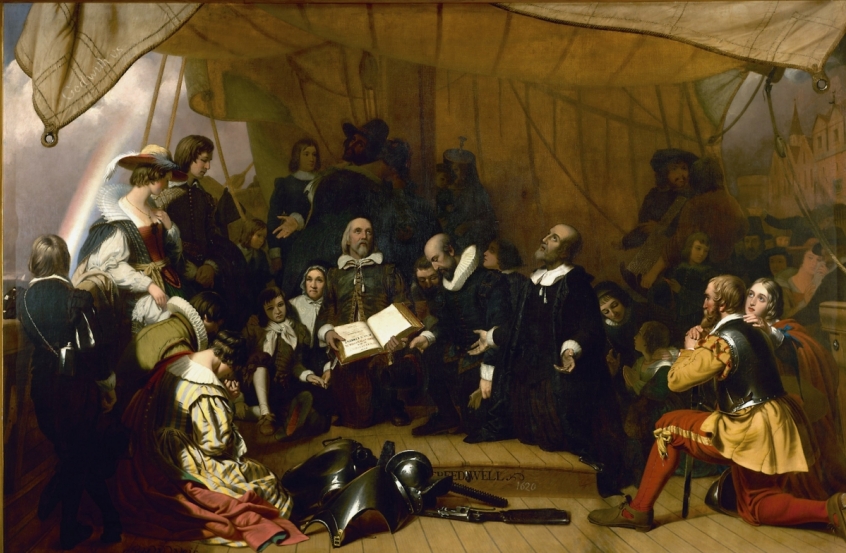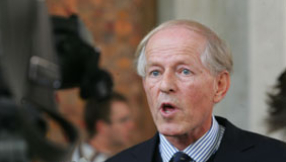
The summer of 1620 saw months of frustrating delays to the sailing of the Mayflower, but as they finally set sail from Plymouth on 16<sup>th September, the pilgrims on board looked hopefully to their destination. 2020 marks 400 years since that famous journey.
The Story
Many of those who sailed on the Mayflower hailed from the small Nottinghamshire village of Scrooby. These men and women worshipped in an Independent congregation that met at the home of one of their elders, William Brewster. Under the pastorate of John Robinson, this small community flourished in their convictions, but faced a heavy toll from the Church of England authorities for their non-conformist stance.
This persecution eventually drove the entire church community to emigrate, and in 1608 they settled in the Netherlands. This was a short-lived solution, however, and in 1620 they returned to England, resolving to head for the New World.
The passengers and crew that assembled on board the Mayflower were an odd mix. About forty came from the Scrooby Independent Church. The rest of the 102 passengers and 30 crew consisted of men and women from across England and the Dutch city of Leiden (where the Scrooby Separatists had settled). Each sought their own 'better future'. Each one had high hopes that the New World would hold much promise for them.
After a lengthy period of planning, and with several false starts in 1620 as the Mayflower and a second ship, the Speedwell (which was intended to sail alongside the Mayflower, before being declared unfit for the journey, causing many pilgrims to abandon the cause) repeatedly required emergency repairs and refitting, the Mayflower at last set sail from Plymouth on September 16th. Because of the faltering start to the journey, those on board had already spent six weeks at sea, yet had only made it from Southampton to Plymouth.
Nonetheless, the crew and passengers aboard were determined that the shores of Virginia offered hope of a new and better life, and so against the odds, their journey began in earnest. Their trip across the Atlantic took 66 days, and neither the journey nor their arrival were comfortable experiences. Their first months in the New World were marked by disease, death and suffering, yet the colony was eventually settled.
The Hope
The Independents of Scrooby, along with the other non-conformists aboard the Mayflower, shared the same hope as many of the others who made the trip. These Christians called themselves the 'Saints' during the journey, to help differentiate themselves; they labelled the others on board the 'Strangers'.
But Saint or Stranger, both were hoping for a new land to make their home in. They both longed for a freedom they hadn't experienced back in Europe, and for a new identity with a security and comfort they would not otherwise have had. Both Saint and Stranger were willing to sacrifice everything they knew for the realisation of this hope, willing to endure even the most arduous of journeys, with one Stranger even being swept overboard.
It was the hope for something better which carried them through to the New World.
The Result
This September marks 400 years since the Mayflower finally set sail from English shores. Those on board left for a variety of reasons, but they were all bound together by the hope that 'better' awaited them. How then shall we remember these first Pilgrim Fathers? Their part in the story of America is well told, and their impact on US society is still felt today as families gather round the Thanksgiving table. But perhaps the most important thing for us to dwell on as we mark this 400th anniversary of their sailing is their hope.
The hope for something better drove those on board the Mayflower to leave behind the people and places that they knew. It drove them to undertake a deadly and dangerous journey into the unknown. This hope for something better drove them to utterly transform their lives.
The 'Saints' aboard the Mayflower had a higher hope than simply a better life. The sole surviving record of their first days in the New World is Mourt's Relation, written by two of the pilgrims, Edward Winslow and William Bradford. This text documents the early months of the new colony, and time and again the writers record that it was through God's providence or deliverance that they were sustained. They saw their journey as one undertaken "for the glory of God, and [the] advancement of the Christian faith."
These believers had fled Europe because they had endured persecution and suffering for their Christian faith. But they knew that their true hope did not lie in the shores of the New World. They set sail armed with a far higher hope.
The Psalmists also knew what it was to face great sufferings. Yet they too had a hope that went far beyond temporary relief. In a simple line from Psalm 119, we find the heart of the Christian hope that equipped the Psalmist, and the pilgrim.
"My soul longs for your salvation; I hope in your word." (Psalm 119:81)
A New World could offer freedom from religious persecution, but the pilgrims aboard the Mayflower had a hope of greater freedom. A hope of true salvation. When we remember this voyage, 400 years on, let's remember their hope of true freedom. Let's be challenged that the Christians aboard this small ship longed for salvation and that their hope was not in a new land, but in a living Word, the risen Jesus.
Ed Creedy blogs on early church history christianclassicist.home.blog













